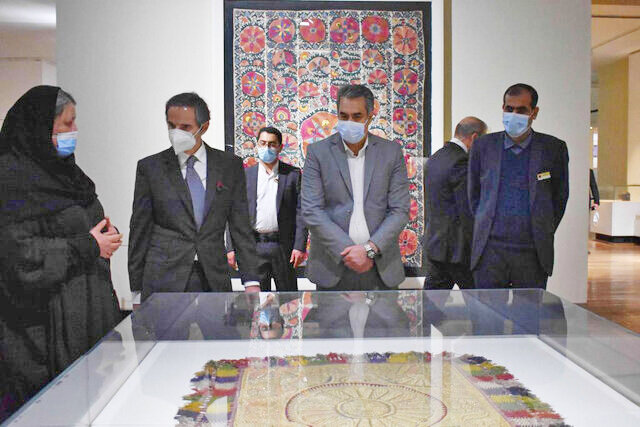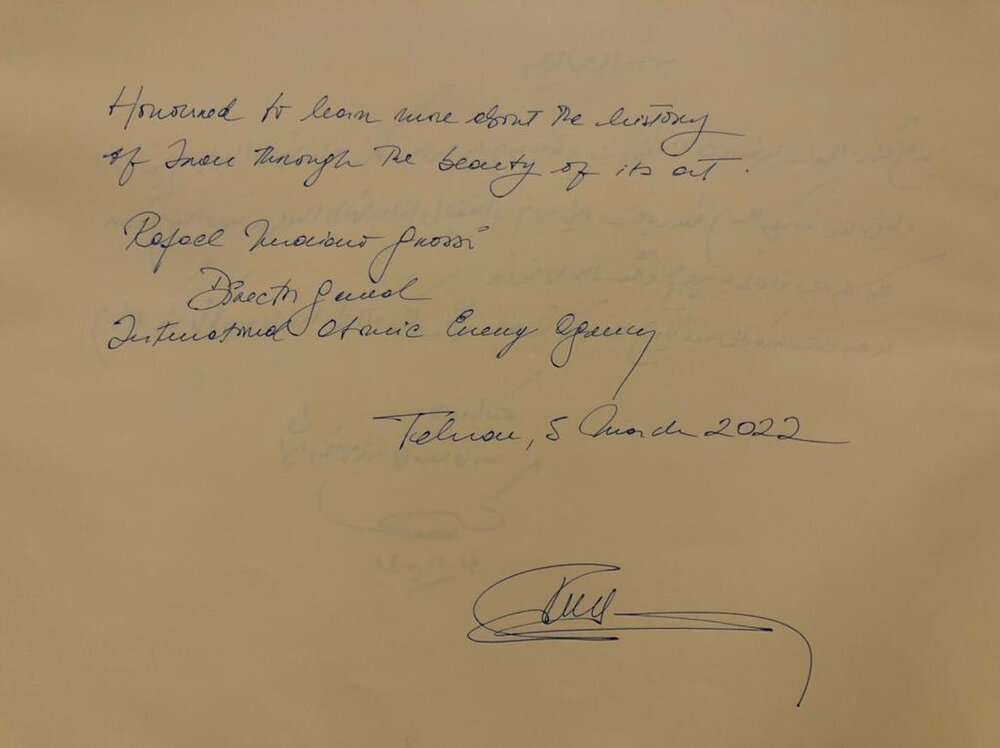IAEA chief tours National Museum of Iran

TEHRAN - On Saturday, the head of the International Atomic Energy Agency paid a visit to the National Museum of Iran, which is chock-full of priceless objects showcasing the juicy history of the nation.
It was the second time that Rafael Mariano Grossi toured the major museum on the sidelines of his diplomatic mission to the Iranian capital.
“He visited the Museum of Archeology and Art of the Islamic era. The manuscripts of Khamseh Nezami and Masalak al-Mamalak, registered in the UNESCO World Memory List, as well as the single-page Quran, attributed to Baysonghor Mirza, the altar of the tomb of Rabieh Khatun Ashtarjan in Isfahan, were considered by the Director-General of the International Atomic Energy Agency,” a museum official told Tehran Times on Sunday.

“Honored to learn more about the history of Iran through the beauty of its art,” wrote Rafael Mariano Grossi in the museum's memorial notebook.
Behrouz Kamalvandi, the spokesman of the Atomic Energy Organization, accompanied the IAEA chief during the visit.
“Praise is to God, the history of our country is full of honors and the attention of the people of this ancient land to the ancient Islamic values. That is why when Islam appeared, these people not only welcomed Islam but also did many services to spread Islamic culture. I am very grateful to all the staff of the Islamic Museum who preserve the cultural identity of our country,” Kamalvandi wrote in the memoirs.
Grossi had previously visited the Museum of Ancient Iran on August 27, 2020. The National Museum of Iran also hosted Yukiya Amano, the former director of the agency, on October 29, 2017.
The National Museum showcases ceramics, pottery, stone figures, and carvings, mostly taken from excavations at Persepolis, Ismail Abad (near Qazvin), Shush, Rey, and Turang Tappeh to name a few.

The building, designed by French architect André Godard and completed in 1928, is one of the more attractive modern buildings in Tehran, blending Sassanian principles such as the grand iwan-style entrance with art deco–style brickwork.
Inside, among the finds from Shush, there’s a stone capital of a winged lion, some delightful pitchers and vessels in animal shapes, and colorful glazed bricks decorated with double-winged mythical creatures. A copy of the diorite stele detailing the Babylonian Code of Hammurabi, found at Shush in 1901, is also displayed – the original being in Paris.
Exhibits from Persepolis include a magnificent human-headed capital, a cuneiform inscription proclaiming the might and godly affinity of Xerxes, and a striking frieze of glazed tiles from the central hall of the Apadana Palace. Also on display are a famous trilingual inscription from the time of Darius I, a bull-headed capital and carved staircase, a statue of a sitting dog that looks like it was carved just weeks ago, and four foundation tablets inscribed in cuneiform.
One of the more startling exhibits is the Salt Man from Zanjan. He is estimated to have been a miner who died in the 3rd or 4th century CE, but whose white-bearded head, leg in a leather boot, and tools were preserved by the salt in which he was buried.
AFM
